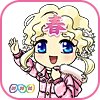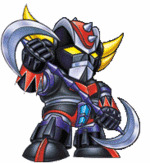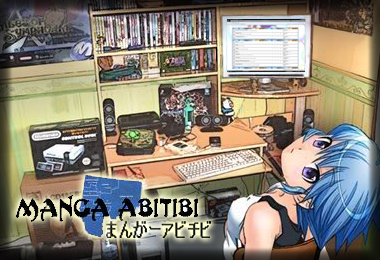[Manga]A quoi ressemble un manga au japon
3 participants
Page 1 sur 1
![[Manga]A quoi ressemble un manga au japon Empty](https://2img.net/i/empty.gif) [Manga]A quoi ressemble un manga au japon
[Manga]A quoi ressemble un manga au japon
Cela fais quelques jours que j'ai penser a faire un post parlant de cela, car je sais pas si cela intéresserais ou pas les lecteurs sur le forum.
Pour ceux qui sont vraiment fans du japon et de manga, surement que vous aller rien apprendre ici dans ce post et que vous savez déjà tout cela.
Le post est pour ceux qui ne connaisse pas grand chose a comment un manga est publié au japon et comment son médium papier est distribué a la population.
Premièrement, si vous pensez que les manga au japon sorte a la base comme ce que vous voyez ici chez vous dans les librairie et que vous achetez dans vos collections, vous vous tromper.
Ce que nous avons ici comme manga qui présente les chapitres d'une série X en particulier est ce que l'on appel un Tankobon.
A la base toute série qui sort au japon est publié par des maison de production (Ex: une des plus populaire est Shueisha) dans des magazine de manga japonais Appeler ''Manga-zashi''
Ce genre de ''magazine'' ne sont pas du tout comme des magazine ici comme 7 jours ou nintendo power ou tout autre ouvrage en papier ciré couleur. Bien qu'il existe aussi au japon ce genre de magazine ci-haut nommé ayant plein d'article et d'image couleur et de sujet publier, les ''magazine'' de manga, les ''manga-zashi'' sont vraiment en papier comme les tankobon que l'on achète ici, mais d'une taille pour vous donner une image comme nos bottin de téléphone.....
enfin nos ancien bottin de téléphone (car depuis quelques années ils sont super mince).
Les manga-zashi sont vraiment des briques et contienne plusieurs chapitres de différentes histoire.
![[Manga]A quoi ressemble un manga au japon Magazine_paper](https://2img.net/h/blog-imgs-51.fc2.com/y/a/r/yaraon/magazine_paper.jpg)
Certain sont publier une fois par semaine, ils sont souvent moins gros et épais (genre de la taille de nos bottin téléphonique actuelle)
Et d'autre sont publié une fois par mois seulement (parfois 2 fois par mois selon des circonstance très très exceptionnel).
Tout comme les tankobon, les manga-zashi sont en noir et blanc sauf pour la page couverture en couleurs et très souvent selon l'événement qui met en vedette un ou plusieurs chapitres de différente série... il y aura un ou 2 page en couleurs.... sois au début pour inogurer le chapitre qui a l'honneur d'être en premier (lead color page) ou le chapitre qui a le mérite d'être dans le milieu du magazine (center color page).
![[Manga]A quoi ressemble un manga au japon 1003_jumpcut](https://2img.net/h/www.premiumcyzo.com/update_files/1003_jumpcut.jpg)
Voyez un manga-zashi comme un tankobon format géant.
Les série qui ont des page de chapitre en couleur dans les manga-zashi est souvent choisie par leur cote de popularité ou pour fête un événement spécial comme 100e chapitre ou Xeime anniversaire de la série ou fêter la sortie d'une série animé de la dite série, etc.
Avoir son chapitre de série avec des page de couleurs est un honneur et une grande récompense en sois, cela a beaucoup d'impact pour la popularité de la série pour un mangaka (auteur).
Un manga-zashi est publié sous un # de volume selon l'année..... Bref, comme tout périodique.
Voici un lien qui montre quelque seconde a quoi ressemble un mangazine de manga japonais, inutile de regarder la vidéo au complet (le sujet de discutions tourne très vite sur d'autre sujet)
Mais au moins on peut voir a quoi ressemble en live.....
https://www.youtube.com/watch?v=ci-3JFQi4S4&feature=player_detailpage#t=104s
j'ai découvert qu'elle magazine elle avait acheter, c'est Feel Young.
wikipedia a écrit:Feel Young is a monthly josei manga magazine published by Shōdensha in Japan. Manga artist whose stories have run in this magazine include Moyoco Anno, Mitsue Aoki, Mitsukazu Mihara, Kiriko Nananan, Mari Okazaki, Erica Sakurazawa, Ebine Yamaji, and others.
Et donc bon, une fois que le magazine a sortie assez de chapitre d'une série en particulier, la série se fais habituellement (a moins que c'est un échec total et imprévue, mais de nos jours les maison de publication sont assez fort en marketing pour pas que cela arrive) publier en Tankobon.
Il y a différent format de Tankobon et très rare sont ceux dont nous avons la chance d'avoir ici au québec c'est format spéciaux publié sauf les série méga légendaire (Dragon ball, naruto sont des exemples)
Désoler pour le wikipedia en anglais, mais il est beaucoup plus complet que celui en francais.
wikipedia a écrit:
A tankōbon (単行本[b class="t_nihongo_icon" style="color: #00e; font: bold 80% sans-serif; text-decoration: none; padding: 0 .1em;"][b class="t_nihongo_icon" style="color: #00e; font: bold 80% sans-serif; text-decoration: none; padding: 0 .1em;"][b class="t_nihongo_icon" style="color: #00e; font: bold 80% sans-serif; text-decoration: none; padding: 0 .1em;"][b class="t_nihongo_icon" style="color: #00e; font: bold 80% sans-serif; text-decoration: none; padding: 0 .1em;"][b class="t_nihongo_icon" style="color: #00e; font: bold 80% sans-serif; text-decoration: none; padding: 0 .1em;"][b class="t_nihongo_icon" style="color: #00e; font: bold 80% sans-serif; text-decoration: none; padding: 0 .1em;"][b class="t_nihongo_icon" style="color: #00e; font: bold 80% sans-serif; text-decoration: none; padding: 0 .1em;"][b class="t_nihongo_icon" style="color: #00e; font: bold 80% sans-serif; text-decoration: none; padding: 0 .1em;"][b class="t_nihongo_icon" style="color: #00e; font: bold 80% sans-serif; text-decoration: none; padding: 0 .1em;"][b class="t_nihongo_icon" style="color: #00e; font: bold 80% sans-serif; text-decoration: none; padding: 0 .1em;"][b class="t_nihongo_icon" style="color: #00e; font: bold 80% sans-serif; text-decoration: none; padding: 0 .1em;"][b class="t_nihongo_icon" style="color: #00e; font: bold 80% sans-serif; text-decoration: none; padding: 0 .1em;"][b class="t_nihongo_icon" style="color: #00e; font: bold 80% sans-serif; text-decoration: none; padding: 0 .1em;"][b class="t_nihongo_icon" style="color: #00e; font: bold 80% sans-serif; text-decoration: none; padding: 0 .1em;"][b class="t_nihongo_icon" style="color: #00e; font: bold 80% sans-serif; text-decoration: none; padding: 0 .1em;"][b class="t_nihongo_icon" style="color: #00e; font: bold 80% sans-serif; text-decoration: none; padding: 0 .1em;"]?[/b][/b][/b][/b][/b][/b][/b][/b][/b][/b][/b][/b][/b][/b][/b][/b], translation close to "independently appearing book") is the Japanese term, originally borrowed from classical Chinese, for a book that is complete in itself and is not part of a series or corpus (similar to a monograph), though modern Japanese publisher may use it for volumes which may be in a series and as a term as opposed to 雑誌 (magazine).[1][2] It can be used for a novel, a nonfiction work, an economics textbook, a book of beauty tips, a book presenting a coherent set of photographs, an exhibition catalogue that samples earlier books, and so forth in a hardcover format. It is more specific than plain hon, which encompasses such books but also one or more issues of a periodical, one or more volumes (or the whole set) of an encyclopedia, etc.
Tankōbon do not include bunkobon (typically used for novels), shinsho (新書, typically used for non-fiction), or rather larger-format mook (ムック, mukku, a blend of "magazine" and "book"), as each is within a series. [3]
Tankōbon may be of any dimensions, from a miniature-sized novelty book (i.e. mamehon, 豆本) to a sumptuous folio-sized one. Nonetheless, oddly-sized tankōbon tend to be given a taxonomical name. Using English bookbinding terms, a tankōbon of prototypical size would be called quarto or octavo.
![[Manga]A quoi ressemble un manga au japon Watashi_no_tankobon_by_KaizokuShojo](https://2img.net/h/fc01.deviantart.net/fs16/i/2007/215/7/7/Watashi_no_tankobon_by_KaizokuShojo.jpg)
wikipedia a écrit:
Typically, manga are first published in thick, phone-book-sized weekly or monthly anthology manga magazines (such as Afternoon, Weekly Shōnen Jump, or Hana to Yume). These anthologies often have hundreds of pages and dozens of individual storylines by multiple authors. They are printed on very cheap newsprint and are considered disposable. A tankōbon collects multiple installments from a single series and reprints them in a roughly paperback-sized volume on higher quality paper.
In English, while a tankōbon translation is usually marketed as a "graphic novel" or "trade paperback", the transliterated terms tankoubon and tankōbon are sometimes used amongst online communities. Japanese people frequently refer to manga tankōbon as komikkusu (コミックス), from the English word "comics".
The term also refers to the format itself—a comic collection in a trade paperback sized (roughly 13 × 18 cm, or 5" × 7") book (as opposed to the larger 18 × 25 cm / 7" × 10" format used by traditional American graphic novels). Although Japanese manga tankobon may be in various sizes, the most common are Japanese B6 (12.8 × 18.2 cm, 5.04" × 7.17") and ISO A5 (14.8 × 21.0 cm, 5.83" × 8.2"). The tankōbon format has made inroads in the American comics market, with several major publishers opting to release some of their titles in this smaller format, which is sometimes also called "digest format" or "digest size". In America, many manga are released in the so-called "Tokyopop trim" or "Tokyopop size" size (approximately 5" × 7.5"),[4] originally introduced by Tokyopop as a compromise between the aspect ratios of the A5 and JB6 sizes.
wikipedia a écrit:
Aizōban
An aizōban (愛蔵版) is a collector's edition volume. These volumes are generally more expensive and lavished with special features such as special covers created specifically for the edition, special paper used for the cover, higher quality paper, a special slipcase, and so on. Aizōban are generally printed in a limited run, thereby increasing the value and collectability of those few copies made. The aizōban format has begun to make inroads into the US market, with titles such as Fruits Basket and Rurouni Kenshin being reissued in aizōban format. Generally only the most popular manga are released in this format.
![[Manga]A quoi ressemble un manga au japon Aizoban4](https://2img.net/h/i199.photobucket.com/albums/aa205/Andervla/aizoban4.jpg)
wikipedia a écrit:
Kanzenban
The kanzenban (完全版) is another term sometimes used to denote this kind of a special release. A kanzenban release is generally A5 size (148 × 210 mm) and will typically reproduce individual chapter covers, color pages, and side-stories from its original magazine run, features that are often omitted or converted to grayscale in standard tankōban releases. While the aizōban appellation emphasizes the value of the volumes, the term kanzenban emphasizes their completeness, though it is likewise generally reserved for popular manga such as Dragon Ball.
![[Manga]A quoi ressemble un manga au japon 2948297677_1_3](https://2img.net/h/ff.img.v4.skyrock.net/9247/52309247/pics/2948297677_1_3.jpg)
wikipedia a écrit:
Sōshūhen
The sōshūhen (総集編) is a relatively new format published by Shueisha beginning in 2008. A sōshūhen edition is B5 size (176 × 250 mm), larger than a kanzenban, and similarly reproduces chapter covers and color pages while also including a variety of bonus features such as posters and interviews. The majority of sōshūhen releases are for popular manga with ongoing serializations, such as Naruto or One Piece. They also contain far more pages than a standard tankōbon and thus feature more chapters in fewer volumes; Naruto Part I was originally published in 27 tankōbon volumes, but was completed in just eight sōshūhen volumes.
![[Manga]A quoi ressemble un manga au japon 0811-naruto-14](http://d00r.c.blog.so-net.ne.jp/_images/blog/_198/d00r/0811-naruto-14.jpg?c=a0)
![[Manga]A quoi ressemble un manga au japon Naruto-collector-3-kana](https://2img.net/h/www.manga-news.com/public/images/vols/naruto-collector-3-kana.jpg)
![[Manga]A quoi ressemble un manga au japon Naruto-collector-6-kana](https://2img.net/h/www.manga-news.com/public/images/vols/naruto-collector-6-kana.jpg)
Wikipedia a écrit:
Bunkoban
A bunkoban (文庫版) edition refers to a tankōbon printed in bunko format, or a typical Japanese novel-sized volume. Bunkoban are generally A6 size (105 × 148 mm) and thicker than tankōbon and, in the case of manga, usually have a new cover designed specifically for the release. In the case of manga, a bunkoban tends to contain considerably more pages than a tankōbon and usually a republication of tankōbon of the same title which may or may not have been out of print. Thus, the bunko edition of a given manga will consist of fewer volumes. For example, Please Save My Earth was published in 21 tankōbon volumes, and then re-released in 12 bunko volumes. If the original manga was a wide-ban release, the bunkoban release will generally have the same number of volumes. The term is commonly abbreviated in Japanese to just bunko (without the -ban).
![[Manga]A quoi ressemble un manga au japon YugiohBunkoban-VOL02-JP](https://2img.net/h/images4.wikia.nocookie.net/__cb20080807003630/yugioh/images/5/5d/YugiohBunkoban-VOL02-JP.png)
![[Manga]A quoi ressemble un manga au japon YugiohBunkoban-VOL04-JP](https://2img.net/h/images2.wikia.nocookie.net/__cb20080811222623/yugioh/images/c/ca/YugiohBunkoban-VOL04-JP.png)
![[Manga]A quoi ressemble un manga au japon Thumb_big_other_2aa9e946abe618cd542001116eca74c5](https://2img.net/h/img25.wallpapercasa.com/uploads/wallpapers/2012/08/17/826921/thumb_big_other_2aa9e946abe618cd542001116eca74c5.jpg)
![[Manga]A quoi ressemble un manga au japon 2eyc3sl](https://2img.net/h/oi44.tinypic.com/2eyc3sl.jpg)
wikipedia a écrit:
Wide-ban
A wide-ban or waidoban (ワイド版) edition is larger (A5 size) than a regular tankōbon. Many manga, particularly seinen and josei manga, are published in wide-ban editions after magazine serialization, and are never released in the tankōbon format that is common in shōnen manga and shōjo manga. When a series originally published in tankōbon format is re-released in wide-ban format, each volume will contain more pages than in the original edition, and therefore the series will consist fewer volumes. For example, Maison Ikkoku was originally released in 15 tankōbon volumes, but was republished as 10 wide-ban volumes.
![[Manga]A quoi ressemble un manga au japon SN3C0743](https://2img.net/h/blog-imgs-36.fc2.com/a/k/a/akaichiro/SN3C0743.jpg)
wikipedia a écrit:
Shinsōban
Similar to a Wide-Ban, A shinsōban (新装版[b class="t_nihongo_icon" style="color: #00e; font: bold 80% sans-serif; text-decoration: none; padding: 0 .1em;"][b class="t_nihongo_icon" style="color: #00e; font: bold 80% sans-serif; text-decoration: none; padding: 0 .1em;"][b class="t_nihongo_icon" style="color: #00e; font: bold 80% sans-serif; text-decoration: none; padding: 0 .1em;"][b class="t_nihongo_icon" style="color: #00e; font: bold 80% sans-serif; text-decoration: none; padding: 0 .1em;"][b class="t_nihongo_icon" style="color: #00e; font: bold 80% sans-serif; text-decoration: none; padding: 0 .1em;"][b class="t_nihongo_icon" style="color: #00e; font: bold 80% sans-serif; text-decoration: none; padding: 0 .1em;"][b class="t_nihongo_icon" style="color: #00e; font: bold 80% sans-serif; text-decoration: none; padding: 0 .1em;"][b class="t_nihongo_icon" style="color: #00e; font: bold 80% sans-serif; text-decoration: none; padding: 0 .1em;"][b class="t_nihongo_icon" style="color: #00e; font: bold 80% sans-serif; text-decoration: none; padding: 0 .1em;"][b class="t_nihongo_icon" style="color: #00e; font: bold 80% sans-serif; text-decoration: none; padding: 0 .1em;"][b class="t_nihongo_icon" style="color: #00e; font: bold 80% sans-serif; text-decoration: none; padding: 0 .1em;"][b class="t_nihongo_icon" style="color: #00e; font: bold 80% sans-serif; text-decoration: none; padding: 0 .1em;"][b class="t_nihongo_icon" style="color: #00e; font: bold 80% sans-serif; text-decoration: none; padding: 0 .1em;"][b class="t_nihongo_icon" style="color: #00e; font: bold 80% sans-serif; text-decoration: none; padding: 0 .1em;"][b class="t_nihongo_icon" style="color: #00e; font: bold 80% sans-serif; text-decoration: none; padding: 0 .1em;"][b class="t_nihongo_icon" style="color: #00e; font: bold 80% sans-serif; text-decoration: none; padding: 0 .1em;"]?[/b][/b][/b][/b][/b][/b][/b][/b][/b][/b][/b][/b][/b][/b][/b][/b]) is a new edition released with (usually) a new cover. The volumes in such a release usually have new color pages and other extras. For example, in 2002, Sailor Moon was reedited; some pages were completely re-drawn and most dialogues were rewritten by the author. Plus, the chapters were redivided to fit into 12 volumes instead of 18.
![[Manga]A quoi ressemble un manga au japon Sailormoon](https://2img.net/h/www.konekokawa.fr/couverture/Sailormoon.jpg)
![[Manga]A quoi ressemble un manga au japon 3081745-01](https://2img.net/h/static.comicvine.com/uploads/scale_large/6/67663/3081745-01.jpg)
Dernière édition par Neosilver le Sam 6 Juil 2013 - 15:51, édité 2 fois

Neosilver-

Nombre de messages : 2662
Age : 44
Ville : Rouyn-Noranda
Emploi/loisirs : TI Réseau
Mon Top 3 Anime/manga : il y en a trop et ca change tout le temps
Date d'inscription : 31/08/2012
![[Manga]A quoi ressemble un manga au japon Empty](https://2img.net/i/empty.gif) Re: [Manga]A quoi ressemble un manga au japon
Re: [Manga]A quoi ressemble un manga au japon
J'aime bien les styles de ceux au japon!!!!!
J'AIME TROP LES LÊTRES JAPONAISE!!!!!!!!!!!!!!!!

J'AIME TROP LES LÊTRES JAPONAISE!!!!!!!!!!!!!!!!


Michoubaku65-

Nombre de messages : 328
Age : 27
Ville : Val d'Or
Emploi/loisirs : Dessine,chante,paint & McDo
Mon Top 3 Anime/manga : Uta no prince-sama, Free!, Phi brain!!!!
Date d'inscription : 08/09/2011
![[Manga]A quoi ressemble un manga au japon Empty](https://2img.net/i/empty.gif) Re: [Manga]A quoi ressemble un manga au japon
Re: [Manga]A quoi ressemble un manga au japon
Nous cousin français aussi ont fais ça avec le journal de Spirou et le journal de Tintin. Chaque semaine on y retrouve 4-5 pages d'une ou deux séries phares et des planches d'un page. Puis 4-5 fois par année il publie un recueil.
![[Manga]A quoi ressemble un manga au japon Spirou_recueil_084-1962](https://2img.net/h/www.lesruesdemontpellier.fr/souks/spirou/spirou_recueil_084-1962.jpg)
![[Manga]A quoi ressemble un manga au japon Recueil-du-journal-tintin-n-93-935038187_ML](https://2img.net/h/pmcdn.priceminister.com/photo/recueil-du-journal-tintin-n-93-935038187_ML.jpg)
Par contre, c'est un magazine avec des chroniques,citiques et des rubriques. Kid Paddle viens justement d'une rubriques jeux vidéo qui c'est transformé en planche d'une page traitant du jeux de la rubrique puis est devenue héros de sa propre série.
Malheureusement, on a plus ce type içi. Les plus vieux pourrais ce rappellé de Gargouille qui a eux sont propre journal mais c'était pas comme les Tankobon
![[Manga]A quoi ressemble un manga au japon Gargouille_skate](https://2img.net/h/tristandemers.com/wp-content/uploads/2011/10/gargouille_skate.png)
![[Manga]A quoi ressemble un manga au japon Spirou_recueil_084-1962](https://2img.net/h/www.lesruesdemontpellier.fr/souks/spirou/spirou_recueil_084-1962.jpg)
![[Manga]A quoi ressemble un manga au japon Recueil-du-journal-tintin-n-93-935038187_ML](https://2img.net/h/pmcdn.priceminister.com/photo/recueil-du-journal-tintin-n-93-935038187_ML.jpg)
Par contre, c'est un magazine avec des chroniques,citiques et des rubriques. Kid Paddle viens justement d'une rubriques jeux vidéo qui c'est transformé en planche d'une page traitant du jeux de la rubrique puis est devenue héros de sa propre série.
Malheureusement, on a plus ce type içi. Les plus vieux pourrais ce rappellé de Gargouille qui a eux sont propre journal mais c'était pas comme les Tankobon
![[Manga]A quoi ressemble un manga au japon Gargouille_skate](https://2img.net/h/tristandemers.com/wp-content/uploads/2011/10/gargouille_skate.png)

Weirdwalker-

Nombre de messages : 103
Ville : Rouyn-Noranda
Date d'inscription : 15/11/2012
 Sujets similaires
Sujets similaires» [manga]La progression d'une image de manga par un artiste (mangaka)
» Apps Apple ! (concernant Manga/Japon)
» Apps Apple ! (concernant Manga/Japon)
Page 1 sur 1
Permission de ce forum:
Vous ne pouvez pas répondre aux sujets dans ce forum